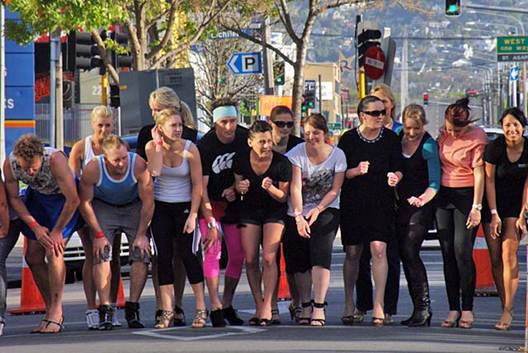Good sporting etiquette will keep you in
favour with those who share your passion. We asked the experts to lay down the
laws.
Running 101

1. Be a good buddy
When Palesa, 28, a chartered accountant
from Johannesburg, entered her first race, her training partner asked that they
stick together. Although she was a stronger runner, Palesa obliged. “But then,
just one kilometer before the finish, by buddy gave me a sneaky grin and broke
into a sprint. To this day, she maintains she beat me!”
Sue Ullyett, who runs Cape Town’s Atlantic
Athletic Club, says this is a serious breach of etiquette. “If you commit to
running with a friend, stick together no matter what.at some point you’ll have
a bad day and need her support!”
2. Go against the flow.
Wherever possible, run against the traffic.
“It’s not a law,” says Ullyett, “but it’s certainly the done thing to avoid
getting knocked over.” Other unspoken safety standards include never lingering
at water stations during a race – it causes congestion – and warning
pedestrians or other runners if you’re about to hurtle past. “Just a simple
‘Runner coming through!’ will do the trick,” explains Ullyett.
3. Just don’t do it
Litter, says Ullyett, is the thing that
really gets her goat. “Despite being constantly told not to, many runners still
toss their water sachets on the road.”
“Last year while racing I saw a runner
throw a sachet over a barrier into the sea! My running buddy took her to task
over it, but she wasn’t concerned in the least. This shows a total lack of
respect.”
Runner and actress Vanessa Haywood who
graced SHAPE’s February cover, couldn’t agree more.
“Even though the organizers usually clean
up quickly, so many packets blow into the sea. If I can keep the bags and
dispose of them at the next water point, then why can’t others?”
4. Know your place
Lining up at the start of a race in the
wrong order is an unforgivable faux pas, says Ullyett.
“There’s an unspoken rule that slower
runners and walkers line up at the back to stay clear of athletes looking to
run a good time. This is often not adhered to and causes major congestion at
big events.”

Lining
up at the start of a race in the wrong order is an unforgivable faux pas, says
Ullyett.